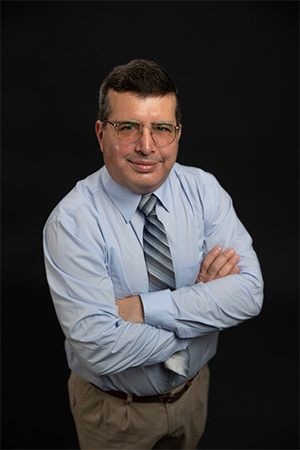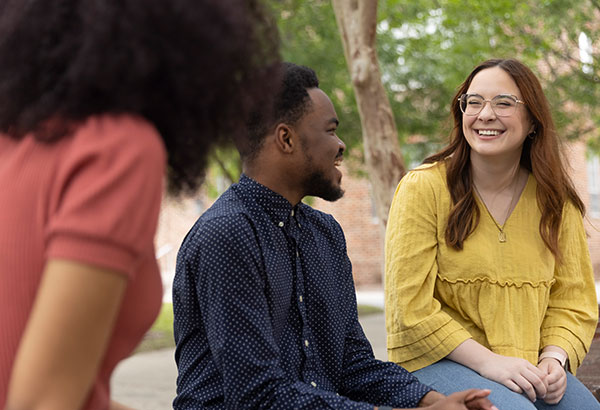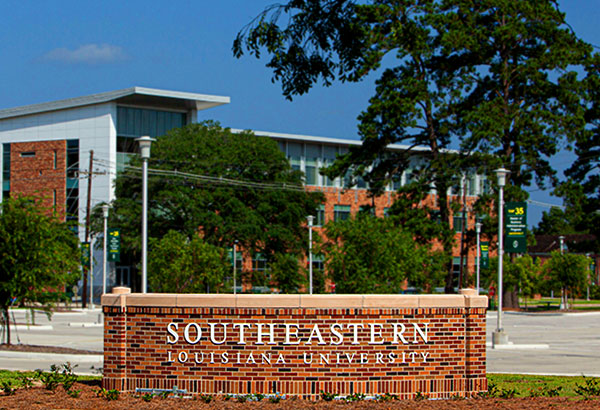Gerard Blanchard
President's Award for Excellence in Teaching
 When Gerard Blanchard began teaching at Southeastern in 1998, his teaching was very
“traditional,” consisting of lectures and demonstrations with paper homework exercises
that did not give his students much of an opportunity to learn from their mistakes.
However, once he was exposed to the concepts of active learning and self-correcting
materials, he decided to apply those to his courses.
When Gerard Blanchard began teaching at Southeastern in 1998, his teaching was very
“traditional,” consisting of lectures and demonstrations with paper homework exercises
that did not give his students much of an opportunity to learn from their mistakes.
However, once he was exposed to the concepts of active learning and self-correcting
materials, he decided to apply those to his courses.
“My ‘lectures’ evolved into short periods of my lecturing, interspersed into longer periods of the students’ working exercises,” he explained. “While the students were working in class, I was available to guide them and correct their mistakes. I taught the students that they would learn more by trying, making mistakes, and correcting their mistakes than by passively watching me work the exercises correctly.”
In fact, Blanchard says his teaching career at Southeastern has been one of continual growth. He has taught 34 different courses, which comprise the entire physics curriculum and service courses. This, he says, is important to the development of his teaching because he finds that teaching a topic at one level helps him to explain it at another.
“Dr. Blanchard has a unique gift for nurturing students wherever they are in their development, while keeping a watchful eye on their future,” said Center for Faculty Excellence Director Mary Ballard. “His programs and projects require students to engage in activities that produce tangible results applicable to their chosen careers. The interactive experiences provide opportunities for critical thinking, task and time management, and teamwork, skills necessary in today’s workforce.”
Since 2018, Blanchard has been providing real-world geophysics experiments to students as co- curricular activities through Project ROOMIE (Remote Observations of Many Interesting Events). Under his guidance, this initiative has received over $75,000 in grant funding from the Louisiana Space Grant Consortium, which is pass-through funding from NASA. The year-long projects for physics majors have resulted in student employment upon graduation and served as recruiting tools for Southeastern.
In a joint report titled “Phys 21: Preparing Physics Students for 21 st -Century Careers,” the American Physical Society and the American Association of Physics Teachers recommended 26 student-learning goals for undergraduate physics programs.
“Project ROOMIE alone covers 18 of those goals,” Blanchard said. “This has benefitted 17 physics majors so far, including 8 of the last 11 physics graduates.”
Chemistry and Physics Department Head Patrick Moyer said that Blanchard is the “consummate professional educator” and that his preparation is thorough. He leaves nothing to chance when it comes to giving students the best opportunity to learn, grow as critical thinkers and succeed, Moyer said.
“I am always impressed that Dr. Blanchard’s expectations and preparation are never perfunctory; his work is thoroughly and carefully considered,” Moyer explained “Equally important is the factthat Gerard brings zero ego into his role as an educator. His approach is humble and motivated by serving his students to the best of his abilities. He sets the standard, not only for students, but also for the entire faculty in the Department of Chemistry and Physics.






